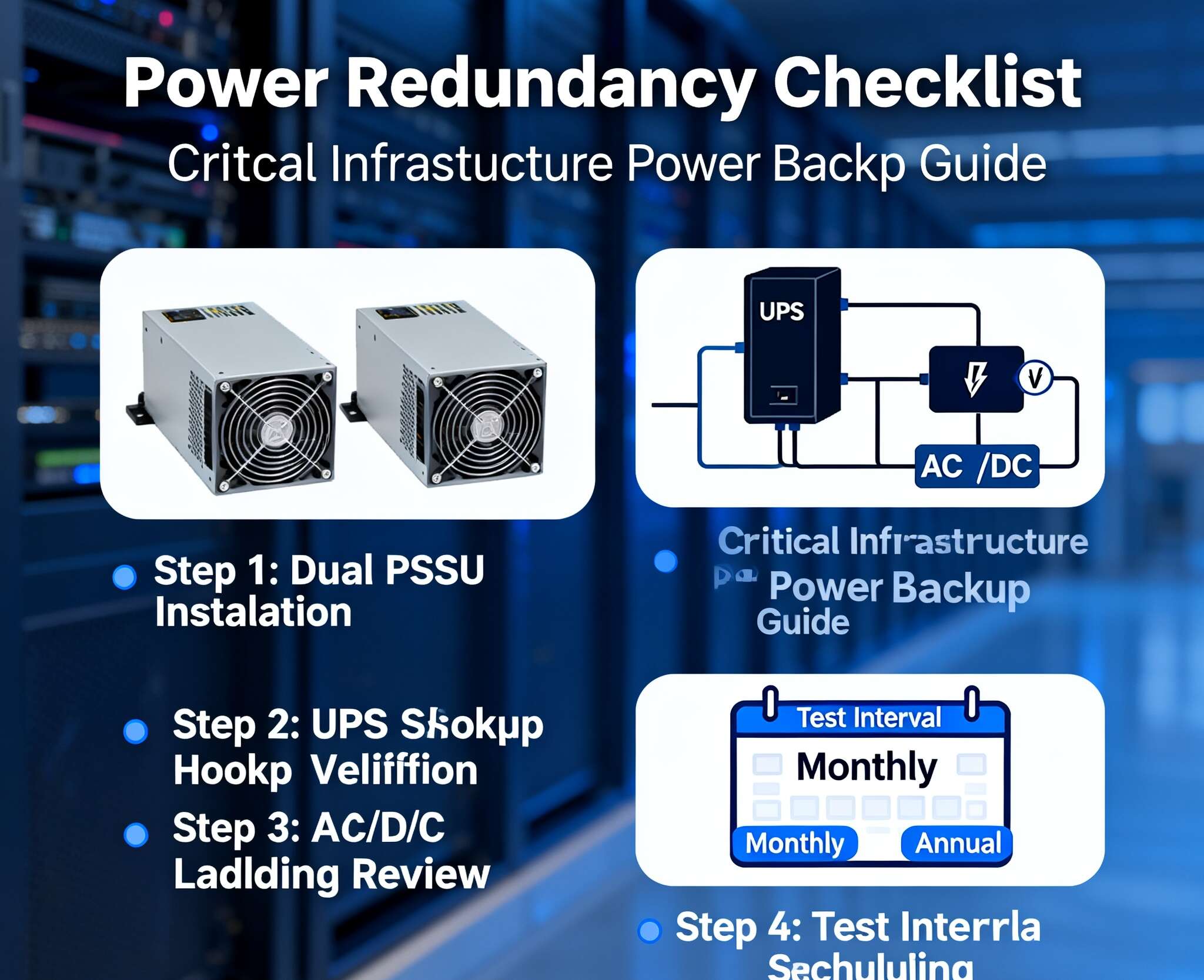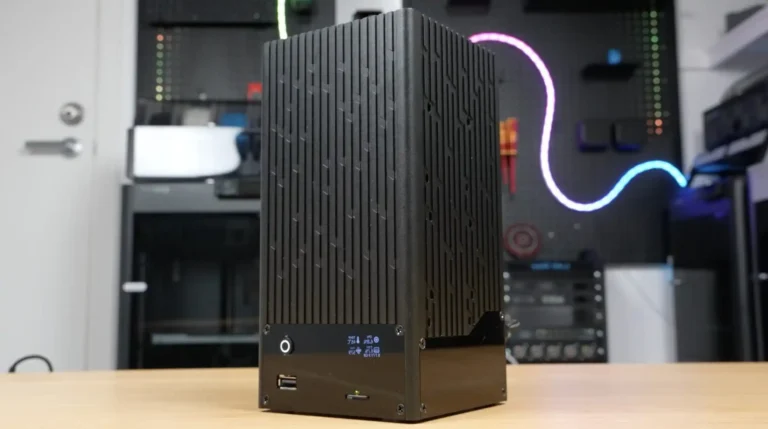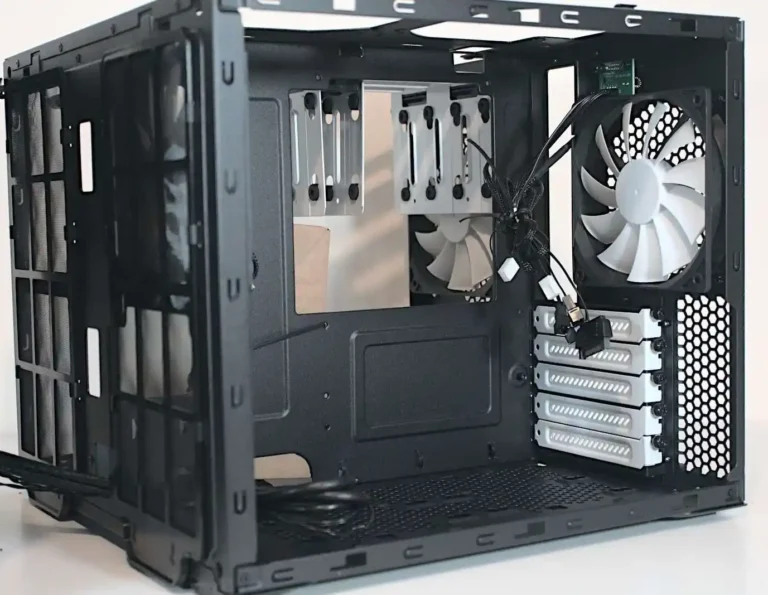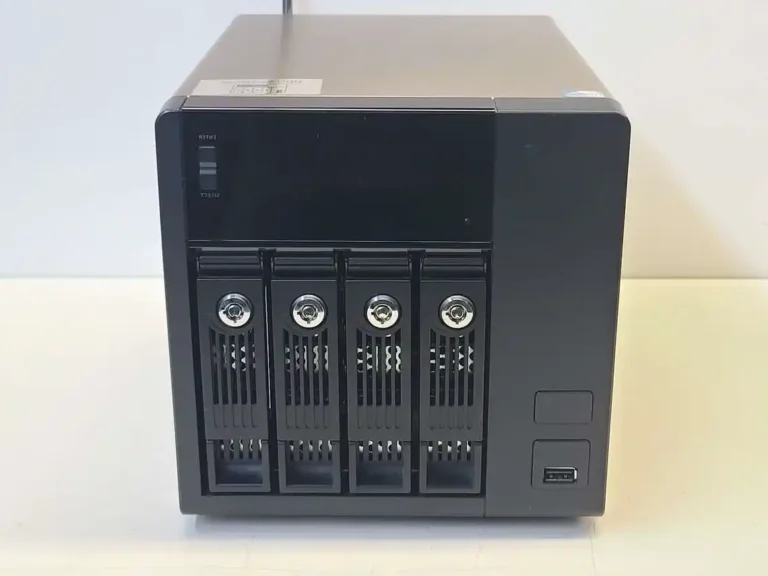You’re building or refreshing a video system. Cameras don’t sleep, storage can’t blink, and downtime is loud. This piece gets blunt and practical: how to pick a NAS chassis for a surveillance VMS so you don’t fight dropped frames, rebuild pain, or noisy racks at 2 a.m. I’ll keep it conversational, a bit scrappy, with real shop-floor talk. No fluff.
NAS Case (for surveillance VMS)
A NAS Case is more than a metal box—it’s airflow, serviceability, and power stability. For VMS workloads (mostly sequential writes + long retention), you want hot-swap bays, redundant PSUs, clean front-to-back airflow, and rails that don’t bite your hands.
- Use a chassis that supports hot-swap on every bay. Drives fail; video can’t.
- Prefer redundant PSU. A single blown PSU shouldn’t end your shift.
- Keep front-to-back airflow. Sideways airflow inside a crowded rack cooks drives.
- Plan LACP or 10GbE from day one; jitter on 1Gb links + bursts = “why is playback choppy?”
Explore options: NAS Case (categories and builds that fit video storage needs).
4-Bay NAS vs 6-Bay NAS vs 8/9/12-Bay NAS
Choose bays based on camera count, bitrate, and retention. Don’t overfit day one and then hit the IOPS cliff during a RAID rebuild later.
- Small sites (few cams, short retention): start lean, but keep a growth path.
- 4-Bay NAS works if you’re careful with RAID and headroom.
- Growing branches (more cams, higher bitrate, weekend spikes):
- 6-Bay NAS gives better RAID choices (RAID6/10) and future disks.
- Campus, plant, hotel (many cams, long history, multi-stream):
- 8-Bay NAS, 9-Bay NAS, or 12-Bay NAS to balance performance and rebuild safety; consider RAID50/60 on large sets.
Tip: keep a few empty bays for cold-add growth. You’ll thank yourself when Legal says “keep longer”.
server rack pc case (when your NAS rides the rack)
If your NAS lives alongside compute, you’ll likely pair it with a server rack pc case form factor. That means rails, depth fit, and cable sanity.
- Check rack depth and rail kit compatibility.
- Use cage-nut-friendly ears; makes moves easier.
- Keep cable management clear so you can hot-swap without yoga.
IStoneCase’s catalog hits the basics for rack life and gives OEM/ODM tweaks if your site’s weird. (They’re positioned as The World’s Leading GPU/Server Case and Storage Chassis OEM/ODM Solution Manufacturer—which helps if you need custom airflow shrouds or special rails.)
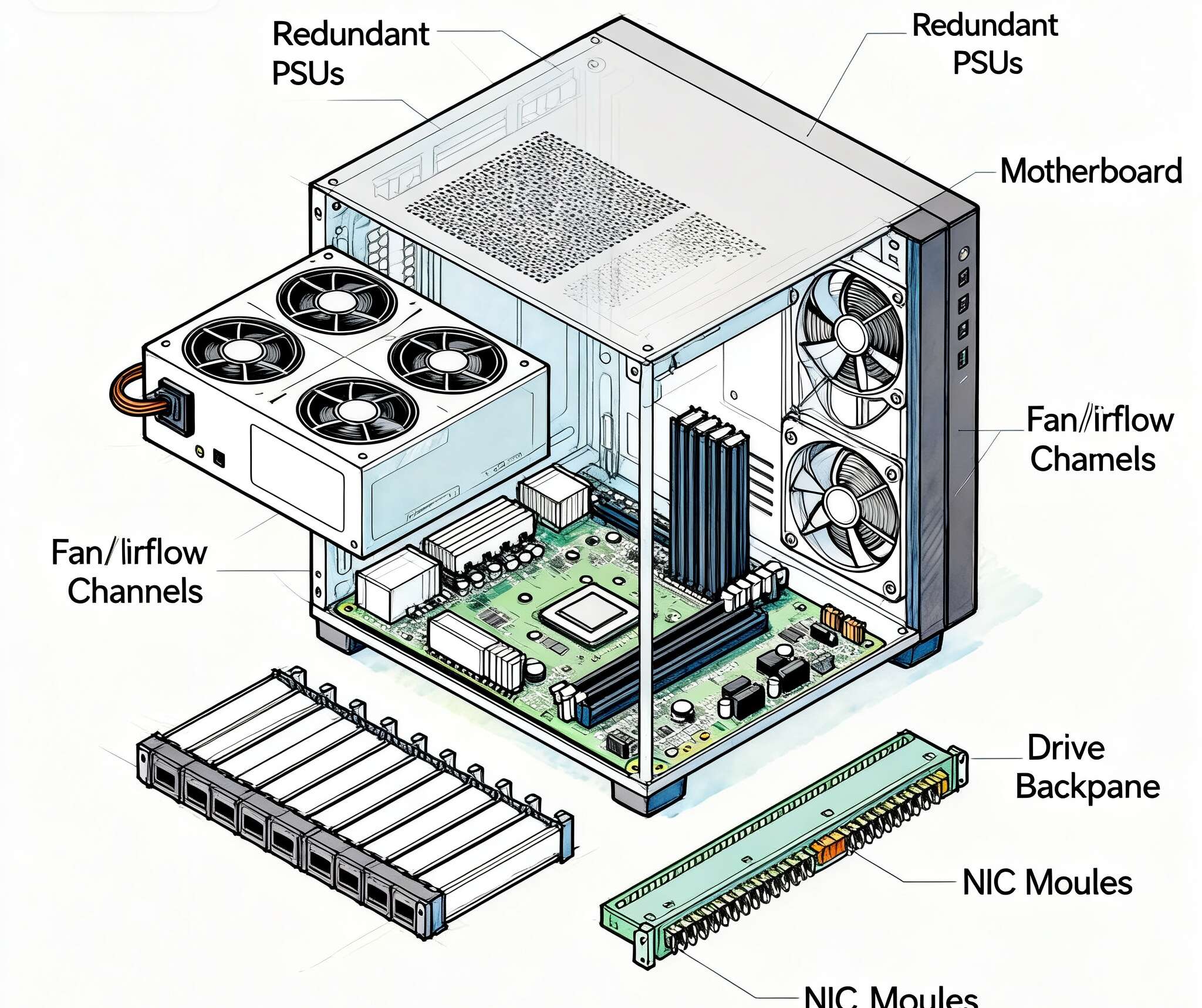
server pc case vs computer case server (wording, same pain)
Naming’s messy, problems are the same:
- server pc case builds: look for PSU redundancy, better backplanes (SAS/SATA), and fan walls that don’t scream but still move air.
- computer case server conversions: cool idea for labs, but don’t cheap out on fans or you’ll meet thermal throttling mid-day.
Both live or die by airflow discipline and clean cable paths.
atx server case (ATX boards in NAS roles)
An atx server case with proper hot-swap cages can serve as a dedicated VMS NAS if you nail the basics:
- Front hot-swap cage for every slot.
- Fan wall behind the cage (remember, video = 24/7 write heat).
- IPMI/remote mgmt if you can: fewer midnight drives to the site.
If you’re mixing GPU analytics on the same frame, separate airflow zones matter (storage cool, GPU hot). Or split duties: NAS stores, GPU box analyzes.
Customization Server Chassis Service (OEM/ODM for real-world constraints)
Weird rooms, short racks, dusty warehouses, wallmount closets—you see it all. When standard SKUs fight your environment, go custom:
- Non-standard depth or wallmount brackets.
- Dust filters and positive pressure for shop floors.
- Fan profiles tuned for nighttime office noise.
- Label/LED mapping for on-site hands.
You can spec this through Customization Server Chassis Service. Batch orders, consistent BOMs, and branding for MSPs or multi-site rollouts.
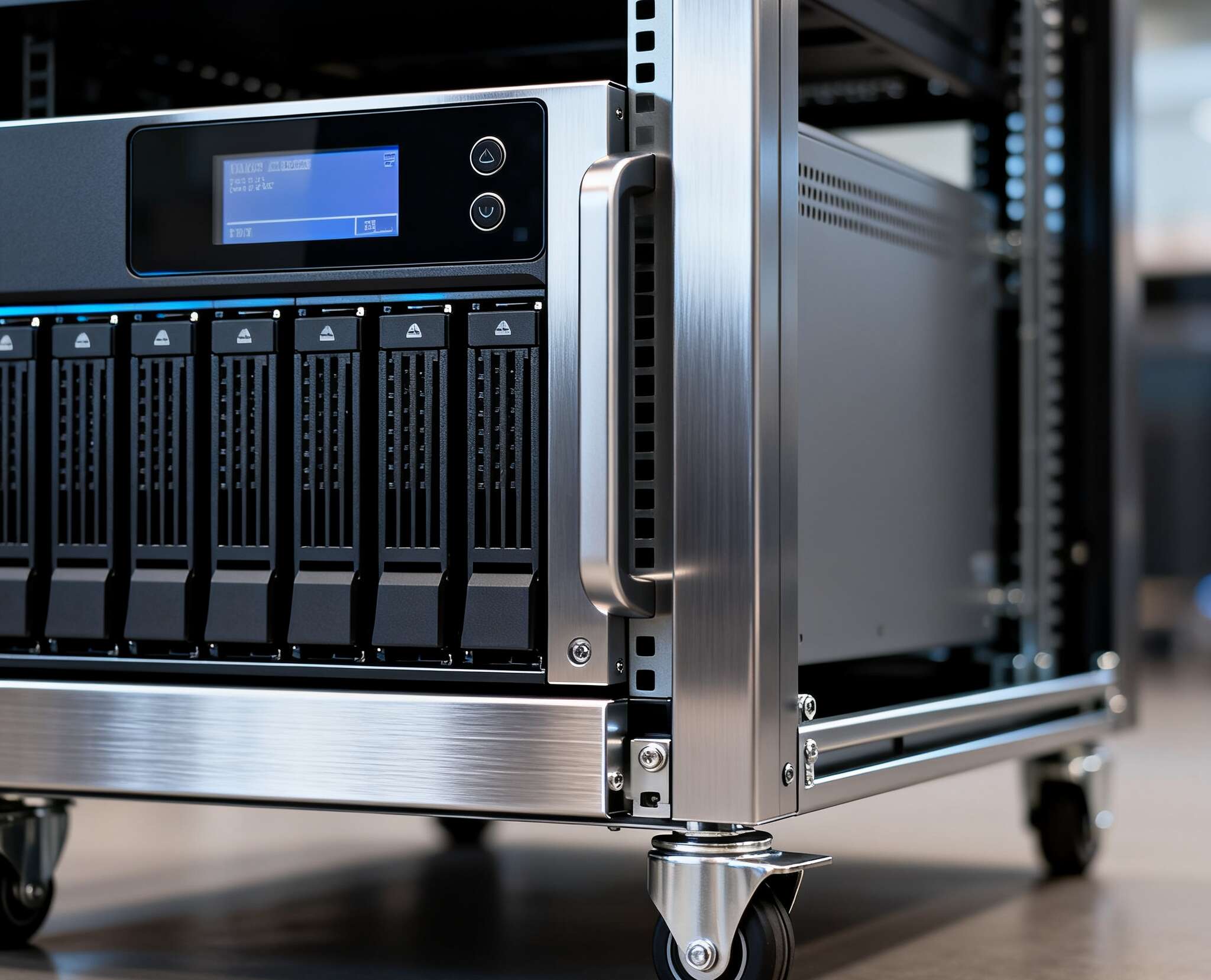
Table: Chassis Checklist for Surveillance VMS
| Checklist Item | Why It Matters for VMS | What “Good” Looks Like | IStoneCase angle |
|---|---|---|---|
| Hot-swap drive bays | Drives die; video must keep writing | Full hot-swap on all bays; tool-less trays | Covered across NAS Case lines |
| Redundant PSU | No power, no frames | 1+1 PSU, easy swap, proper cord retainers | Offered via OEM PSU options |
| Airflow (front→back) | 24/7 sequential writes = heat | Straight path, fan wall, no cable blockage | Rack kits + tuned fan layouts |
| Backplane quality | Rebuilds + bursts need stable links | SAS/SATA backplane, clean traces, good connectors | Integrated in higher-bay models |
| Rails & serviceability | Mean Time to Replace matters | Ball-bearing rails, safe latches, finger room | Rail sets in rack kits |
| Network I/O | Bursts crush single links | Dual-port + LACP or 10GbE | Options depend on board/NIC choice |
| Acoustics & dust | Offices hate fan scream | PWM fans, filter doors, sane profiles | Custom fan curves/filters available |
| Growth path | Retention always grows | Free bays, spare power/thermal headroom | 6/8/9/12-Bay ladders for scaling |
Real-world scenes (short stories, real pain)
Branch office, 32 cams. They started with a 4-bay box. It worked… until they added tap-to-open doors and weekend events. Writes spiked. One drive failed; rebuilds dragged; playback stuttered. We moved them to a 6-bay chassis, RAID6, added 10GbE uplink to the core. Stutters gone. Lesson: start small, leave space to grow, don’t starve the link.
Manufacturing floor, dust + heat. Great cameras, bad air. Filters clogged in three months, fans screamed, two drives overheated. Custom filter door + higher static-pressure fans (not louder, just smarter). Problem solved. This is where OEM/ODM saves headaches versus forcing a standard faceplate into a dirty room.
Hotel + long retention. The ask wasn’t fancy, it was quiet. We selected an 8-bay with better acoustic profiles, thicker panels, rubberized trays. Network used LACP to the switch core. Night manager stopped filing noise tickets. Sometimes “quiet” is a top KPI.
Network tips (keep it simple)
- Don’t daisy-chain miracles. Either aggregate links or pick 10GbE.
- Use dedicated VMS write shares (own volume, no recycle bin, no snapshots).
- Separate write from playback/export traffic when you can.
- QoS on the switch > guessing. It’s boring, do it anyway.
RAID notes (surveillance flavor)
- Small to mid boxes: RAID6 or RAID10 depending on your performance vs. capacity stance.
- Large bays (8–12): look at RAID50/60 to tame rebuild windows.
- Keep spare drives on-site. Also, label your trays; future-you will appreciate.
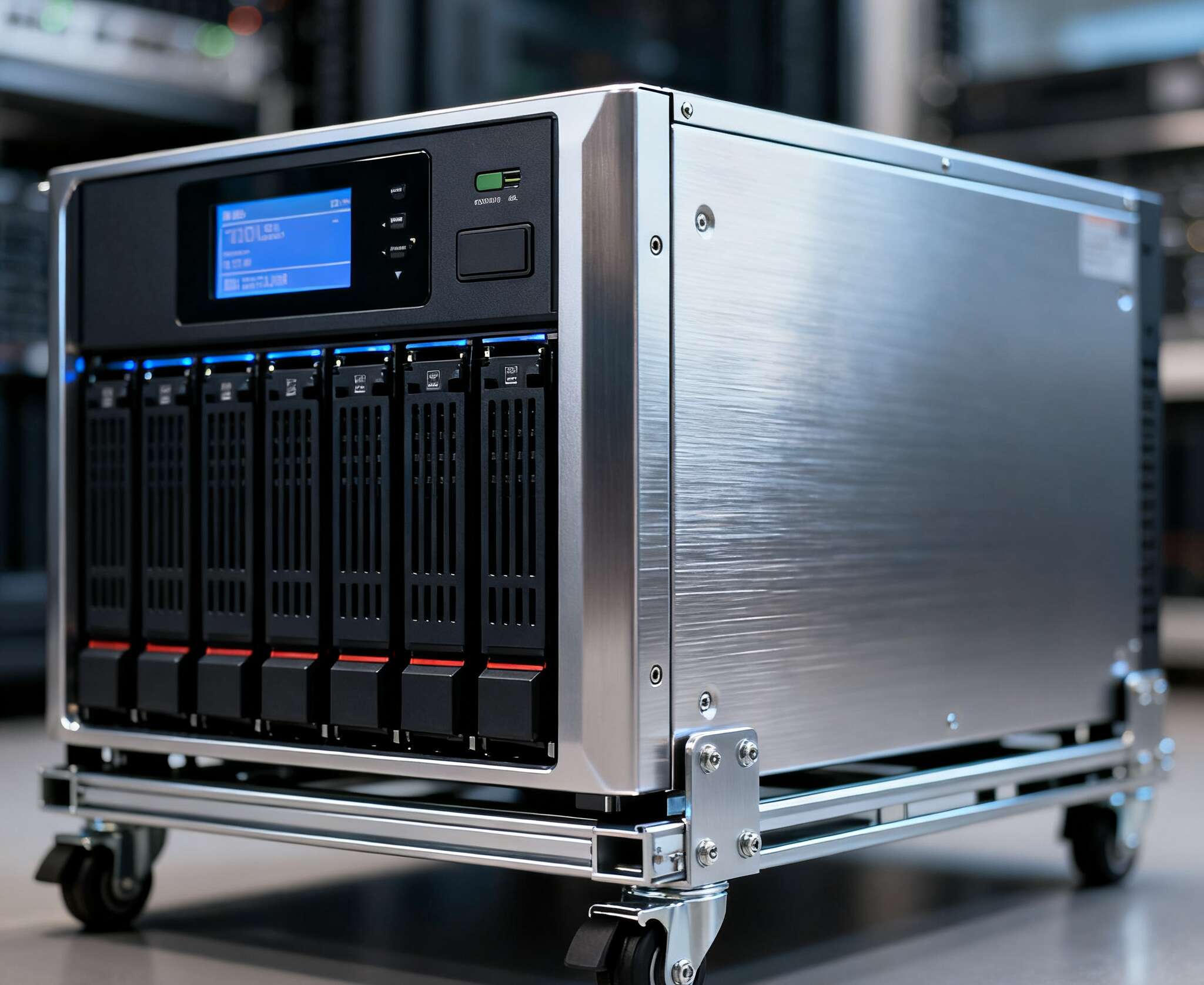
Why IStoneCase fits VMS NAS builds
- They focus on server cases, NAS devices, GPU frames, and rails, not toy enclosures.
- Bulk and wholesale friendly—clean when you’re standardizing across branches.
- OEM/ODM means the “this closet is 500 mm deep and the door hits the handle” constraints get solved, not ignored.
- Audience fit: data centers, algorithm teams, MSPs, mid-market IT, research labs, enthusiasts who actually rack stuff.
- And yes, you can step from a compact NAS to GPU analytics in the same ecosystem when needed.
Browse the lineup as you plan:
4-Bay NAS • 6-Bay NAS • 8-Bay NAS • 9-Bay NAS • 12-Bay NAS
H3: server pc case airflow & cooling (surveillance workload)
- Fan wall behind the drive cage, not just two lonely rears.
- Keep cables out of the wind tunnel. Zip, route, breathe.
- Staggered spin-up helps inrush; PSU doesn’t flinch at 9 a.m.
H3: computer case server maintenance & rails (hands matter)
- Rails with positive stops. Don’t dump the box on your knees.
- Front-serviceable fans. If you must pull the server to swap a fan, you’ll wait.
- LED map that matches the backplane. “Which bay is bay 7?” shouldn’t be a puzzle.
H3: atx server case + NAS bays (mixed roles)
- If you co-host light compute and NAS in one ATX frame, isolate airflow zones.
- Use proper hot-swap cages, not random desktop sleds.
- IPMI or equivalent out-of-band control = less onsite panic.
Quick buyer’s mini-check
- Power: Redundant. Real cords. Cable retainers.
- Cooling: Front-to-back airflow, PWM fans, clear paths.
- Service: Hot-swap trays, rails, front fan access.
- Backplane: Reliable SAS/SATA, clean connectors.
- Network: 2×1Gb with LACP or straight 10GbE.
- Growth: Spare bays + thermal budget.
- Noise/Dust: Acoustic goals and filters if needed.
- Custom: If the room is odd, go Customization Server Chassis Service.

